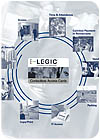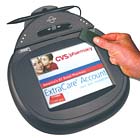ID SYSTEMS: Weighing Contactless Cost

With return on investment a crucial part of convergence, it’s a solid enterprise exercise to consider what a contactless smart card access control system has to offer and what makes it a cost-effective alternative to swipe card and code-based access solutions.
Historically, locking and access control systems developed as separate entities, according to Stephen Neff of LEGIC Identsystems Ltd., the Swiss-based firm. He contended that the consequences of this were that such non contactless systems were inefficient, limited in functionality, generated high administrative costs and were very user-unfriendly. Since the introduction of radio frequency identification (RFID) technology, however, locking and access control systems have now merged into highly practical multifunctional systems that can be centrally and efficiently managed.
A contactless-based system consists of two components: a reader and an identification device, such as a smart card, tuned to the same radio frequency. Numerous smart cards can usually be accommodated on the same system. Each is issued with its own identity, enabling the reader to simultaneously process transactions from several different authorized individuals.
Contactless systems offer significant advantages in terms of convenience and cost-efficiency, according to Neff. When worn on a lanyard around the neck or clipped to a skirt or jacket, it requires little effort to use. This method takes less time than retrieving a card from a pocket and passing it through a swipe card slot. So with no need for physical contact, there is no wear and tear on either the cards or the reader, giving almost limitless card life and almost no maintenance requirements.
A further advantage is that it offers a high level of vandal-resistance when compared to a keypad or swipe card reader because there is little to attack. Where the risk of attack is particularly high, however, reader electronics can be located on the secure side of an entrance or within a door or doorframe, out of reach.
With this procedure, any legal concerns about data protection are largely resolved.
Quicker verification
Another advantage is that verifying systems work quicker because a biometric measurement is verified with a reference template stored on the smart card. The risk of a mistaken identity of a similar reference is statistically almost non-existent and the rejection rate is extremely low. Contactless RFID systems to date must allow the addition of such biometric templates to offer maximum access security to critical locations.Neff believes that, while it is true that contactless-based access control systems used to be expensive, a closer examination shows the differential to have dropped significantly. Taking the level of available security into account, and with an eye for the total cost of ownership, contactless systems offer the best benefit to cost of all ID systems.

Retail applications of contactless cards should drive greater enterprise acceptance.
Retail Security Blazes Trail
Convergence can mean security and convenience. Contactless payment is taking off in the United States. One example: Austin-based Axalto Inc. provided about five million contactless cards to top banks last year. American Express, MasterCard and Visa USA have all launched contactless payment initiatives and many top retailers, such as McDonald’s, 7-Eleven and CVS, have deployed payment terminals to accept the new cards. CVS purchased 12,000 Hypercom RFID-enabled payment terminals based on the advanced functionality of the Optimum L4100,For More Information
More information on smart cards and convergence is available with LINX service, powered by Google.Links
Looking for a reprint of this article?
From high-res PDFs to custom plaques, order your copy today!




